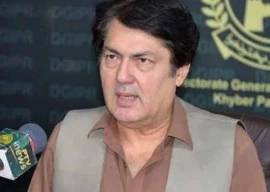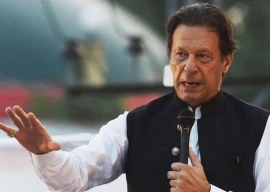
Then there is the Afghan-Pakhtun diaspora to consider. In History of Pashtun Migration, 1775-2006, (OUP 2008), Robert Nichols says: “In Pakistan in 2004, perhaps 500,000 Afghans still lived in Karachi. One estimate of this period listed over one million Afghans still in Pakistani camps recognised by the UNHCR, plus 500,000 to one million urban refugees in Pakistani cities, and another million or so in the country for other reasons” (p.151).
The ANP leader in Karachi, Shahi Syed, has laid claim to four million Pakhtuns in Karachi. Does he include all the three categories: those from K-P, those from Fata and those from Afghanistan? His chief, Asfandyar Wali, not long ago came on TV to disown the Pakhtun from Fata. Owning them would mean: either the ANP changes or the Pashtuns change in character. If the ANP changes, it will get more than the two seats it now has out of 42 Karachi seats in the Sindh Assembly. It is clear that the ANP is changing under pressure, which will affect not only its relations with Pakhtuns in Karachi, but also the Taliban and al Qaeda elsewhere.
The ANP will thus create a counterforce to the MQM. It is politically advantageous too because Karachi is essentially the city of the Urdu-speaking and the Pakhtun. Karachi’s observing genius, Arif Hasan, says: “According to the 1998 census, 48 per cent of the city’s population is Urdu-speaking, 14 per cent Punjabi-speaking, 12 per cent Pashto-speaking and about nine per cent is Sindhi-speaking” (Dawn, June 25, 2010).
The Punjabis don’t count because they don’t have the ‘minority complex’ needed to band together linguistically. The battle is between the MQM and the Pakhtun, equalised by the “hinterland” support the Pakhtuns have and the numerically-superior MQM doesn’t. The ANP cannot ignore some facts even if it is leery about the Fata Pakhtuns. Karachi hosts the largest concentration of urban Pakhtun population, surpassing Peshawar, Quetta and Kandahar.
And it all started in Sohrab Goth, the Pakhtun ghetto. In his Partition and the Making of the Mohajir Mindset: A Narrative (OUP 2008), Brigadier AR Siddiqi recounts: “After the success of the mammoth gathering at Nishtar Park, Karachi, the MQM organised an equally big rally in Hyderabad on October 31, 1986. On the way to Hyderabad from Karachi, the MQM motorcade was attacked at Sohrab Goth, the notorious hub of Karachi’s drugs mafia” (p.128).
Today, the killing of MQM leaders is followed by the killing of ANP leaders. Is this a Sohrab Goth-like vendetta? There are ambiguities to consider. Shia Raza Haider was killed by Lashkar-e-Jhangvi, a part of al Qaeda’s 313 brigade led by Ilyas Kashmiri in North Waziristan. In K-P, ANP leaders are regularly killed by the Pakhtun Taliban. Maybe this is not a vendetta between the MQM and the ANP. It is possible that a third party — the Taliban and their master the al Qaeda — is killing people on both sides of the divide.
Karachi is 75 per cent ethnically segregated. This is called ghettoisation. Ghettoisation began as a segregation of the victim community by those intent on genocide. Later ethnic communities began to segregate themselves for reasons of defence. This second type of ghettoisation is a recipe for ethnic war. And this is going on. The battle remains unequal because unlike the MQM, the ANP cannot lay claim to leading all the Pakhtuns of Karachi. At least not yet.
Published in The Express Tribune, August 29th, 2010.





1725254039-0/Untitled-design-(24)1725254039-0-270x192.webp)
1732189200-0/Express-Tribune-(13)1732189200-0-270x192.webp)



1732186994-0/Untitled-design-(10)1732186994-0-270x192.webp)






COMMENTS (6)
Comments are moderated and generally will be posted if they are on-topic and not abusive.
For more information, please see our Comments FAQ